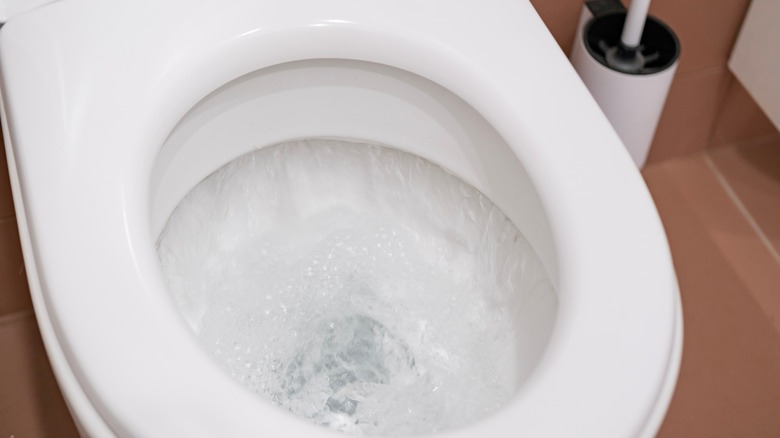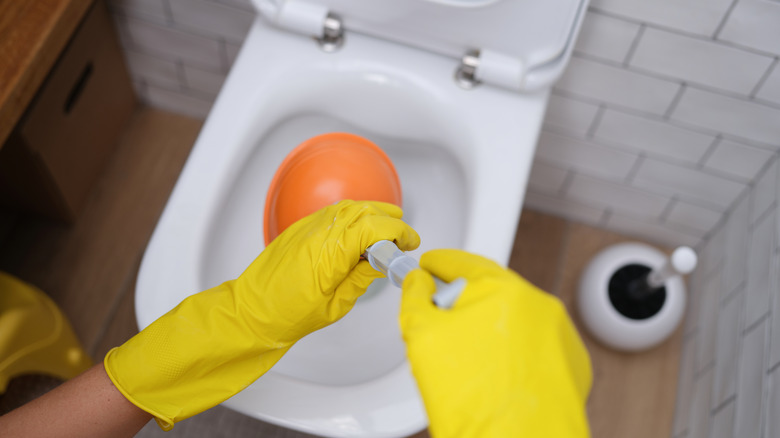How To Quickly Stop Your Toilet From Overflowing
The modern toilet has come a long way from the outhouses of old, but they aren't perfect. Occasionally, you may find yourself the victim of an overflow, usually courtesy of a blocked pipe. When too much toilet tissue or a fallen object finds a way into the plumbing, it stops water from flushing down the drain line. Instead, it rises, pouring over the basin's rim, and onto your clean floor.
Learning how to stop a toilet from overflowing sometimes feels like an impossible task. You could end up in a slippery situation without the right tools and know-how. Fortunately, there are a few quick fixes to try in a pinch. The first way to rectify this problem is to stop the water from flowing. If there's no liquid pouring into the bowl, it can't spill back out of it. The second is to find the best way to really unclog your toilet so it drains properly. Check out the fastest ways to accomplish these tasks so you get your bathroom back in working order.
Stop toilet from overflowing by plugging the tank
If water is pouring out onto the bathroom floor, you've got to think quickly. It helps to understand what's going on inside your toilet tank. When you press the flushing lever, it lifts a flapper blocking the contents from rushing out into the bowl below. This releases water through rim and siphon jets, forcing the flush action. The flapper re-plugs the opening when the tank drains so it can refill. If the toilet clogs, there are two ways to stop the overflow — plug the flapper hole manually, or turn off the water at the source.
The flapper is easy to see in the bottom of the tank. As soon you notice the bowl is beginning to overfill, lift the tank lid and push the rubber stopper back into place. No more liquid should rush down, giving you a chance to diagnose the cause of the issue. If this doesn't work, switch off the water valve. Depending on the layout of your plumbing, you may find the valve in the wall to the left of the toilet. Rotate the handle clockwise until you feel resistance. Don't forget to turn it back on once the problem is resolved. If a clog is the culprit, another way to quickly stop the overflow is to plunge it.
Quickly remove the blockage by plunging
There are many reasons why your toilet may keep clogging. Sometimes you can't even see where it's happening, as it may be hidden in the trap between the toilet drain and the sewer pipe. Whatever the reason, or where it resides, the blockage causes water to rise in the bowl, leading to an eventual overflow. But if you act quickly, you can dislodge the clog before things get too wet. The first thing you need is a proper plunger.
Not all plungers work the same. Some are designed for sinks and tubs and have a flat bottom, while a toilet plunger narrows into a flange which creates a tighter seal. Before you start, fill the cup at the base with water, otherwise, you'll force more overspill when the air inside rushes to the surface. Lower it into the toilet bowl slowly and line it up with the drain, before giving it a sturdy, but gentle, push downward. The water inside the cupped end forces the blockage to move. This may take a few tries, so don't be discouraged if nothing happens on the first plunge. If all else fails, contact your local plumber for assistance and grab some towels while you wait.


